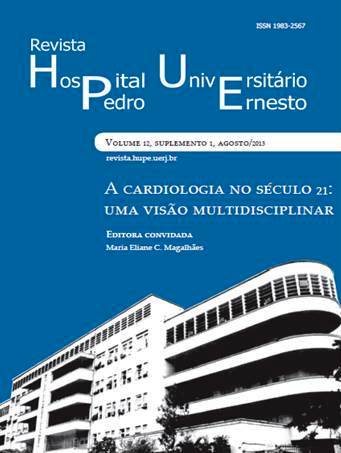Pulmonary arterial hypertension: a multidisciplinary proposol
DOI:
https://doi.org/10.12957/rhupe.2013.7084Abstract
Revista HUPE, Rio de Janeiro, 2013;12(Supl 1):61-73
doi:10.12957/rhupe.2013.7084
Pulmonary arterial hypertension (PAH) is a rare disease characterized by a progressive increase in pulmonary vascular resistance, leading to right heart failure and premature death. Over the last decades, a better understanding of the pathogenesis of PAH has led to the approval of several targeted therapies that confer improvements in patients’ clinical and haemodynamic status, quality of life and survival. The clinical manifestations are non-specific but progressive, with the majority of patients presenting with worsening dyspnea, the most common symptom, that has usually been attributed to other cardiorespiratory disorders. As a consequence, diagnostic delay is usual, with 75% of patients reporting New York Heart Association functional class (NYHA-FC) III or IV symptoms by the time the diagnosis is established. Brazil has until March 2013 indexed in the database PUBMED 52 articles on this topic since the early twentieth century. In fact, the disease was forgotten until the early 1990s, when it was found that their frequency was greater than previously thought and that it could be approached together or separately, in cases of idiopathic etiology, improving quality of life and increasing survival in years. In Brazil, despite advances in therapeutic and diagnostic approach, there are few reference centers for diagnosis and treatment, which hinders the capillarization of knowledge. This review presents the current scenario of the diagnosis of PAH and its broad perspective for treatment.
Keywords: Pulmonary arterial hypertension; Therapy ; Review.


